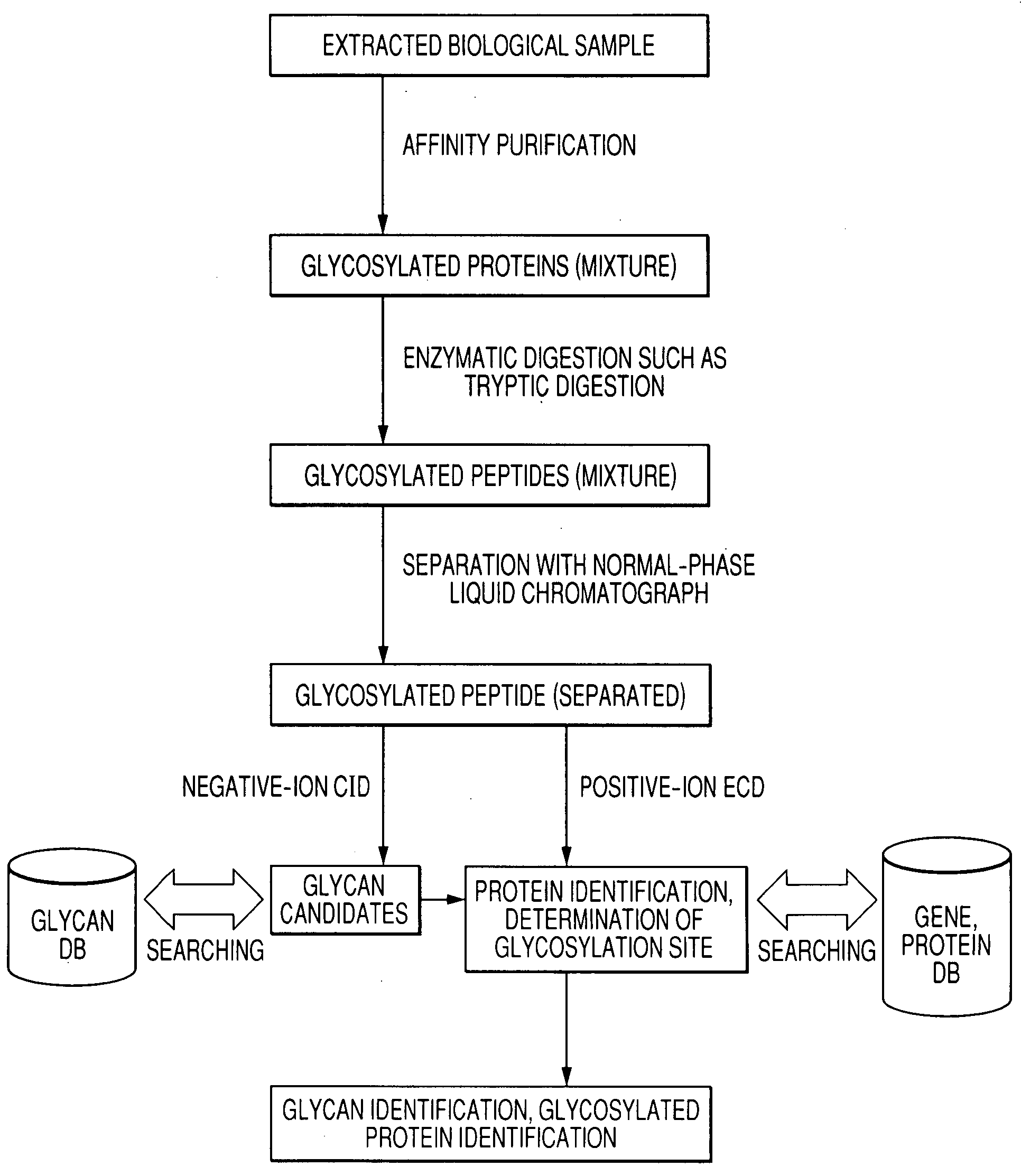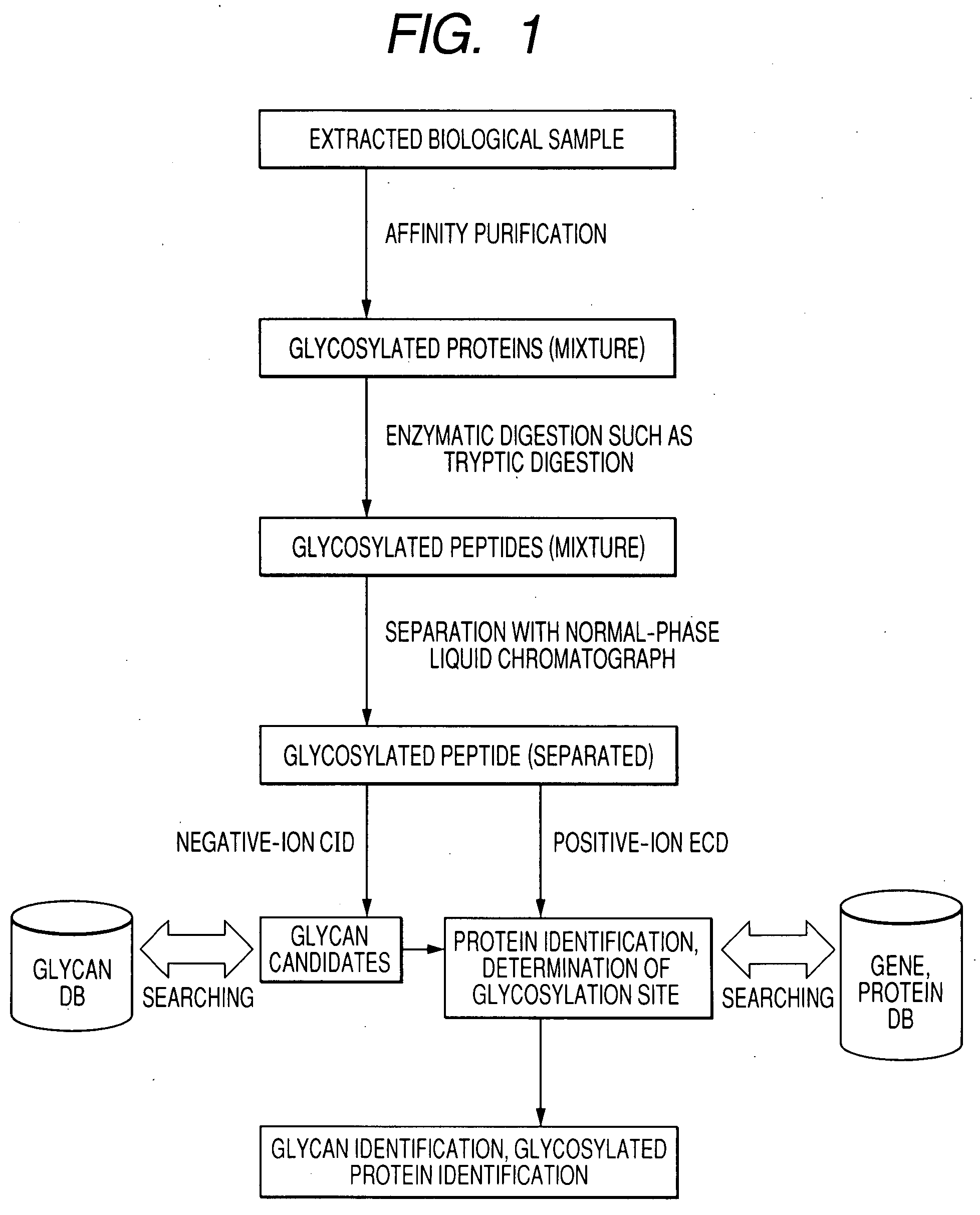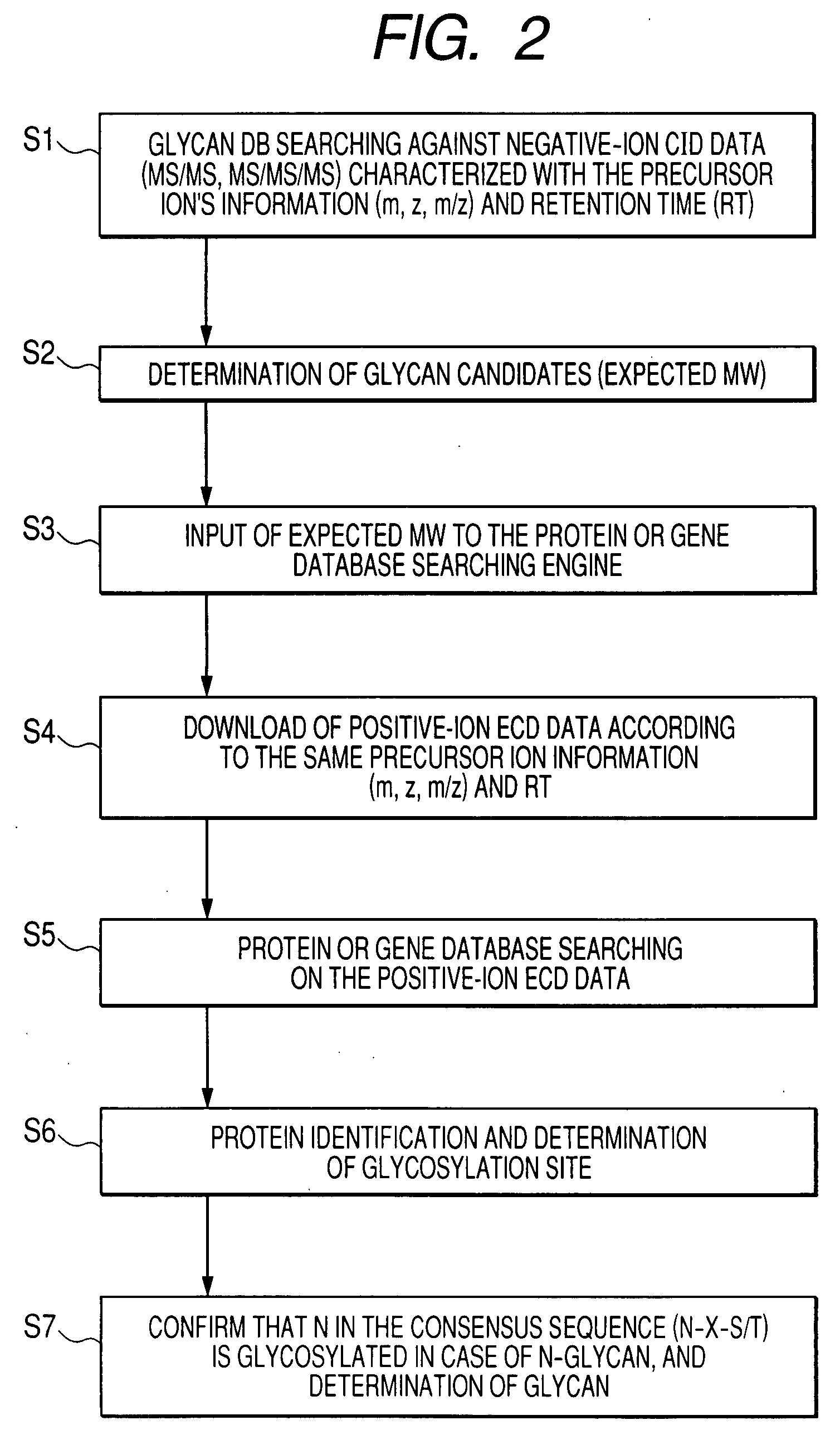Methods and instruments for identification of glycosylated proteins and peptides
a glycosylated protein and peptide technology, applied in the field of methods and instruments for analyzing biological materials using mass spectrometry, can solve the problems of difficult to analyze glycan structures, difficult to determine the structure of unknown glycans, and difficult to analyze glycans, so as to achieve less time and effort.
- Summary
- Abstract
- Description
- Claims
- Application Information
AI Technical Summary
Benefits of technology
Problems solved by technology
Method used
Image
Examples
Embodiment Construction
[0024]Some embodiments of the present invention will be illustrated below with reference to the attached drawings.
[0025]FIG. 1 illustrates how a sample is analyzed by a method for analyzing glycosylated peptide structures according to an embodiment of the present invention. To analyze a glycosylated protein (mixture) extracted from a biological material, such as blood, the extracted biological sample is subjected to affinity purification typically with lectin and further subjected to enzymatic digestion such as tryptic digestion to yield a glycosylated peptide (mixture).
[0026]The glycosylated peptide (mixture) is separated typically with a normal-phase liquid chromatograph. When a liquid chromatograph / mass spectrometer (LC / MS) system is used, separated components are sequentially introduced into an ion source of the mass spectrometer.
[0027]In ionic analysis with a mass spectrometer, negative ions derived from a glycosylated peptide are initially analyzed, and positive ions derived t...
PUM
 Login to View More
Login to View More Abstract
Description
Claims
Application Information
 Login to View More
Login to View More - R&D Engineer
- R&D Manager
- IP Professional
- Industry Leading Data Capabilities
- Powerful AI technology
- Patent DNA Extraction
Browse by: Latest US Patents, China's latest patents, Technical Efficacy Thesaurus, Application Domain, Technology Topic, Popular Technical Reports.
© 2024 PatSnap. All rights reserved.Legal|Privacy policy|Modern Slavery Act Transparency Statement|Sitemap|About US| Contact US: help@patsnap.com










